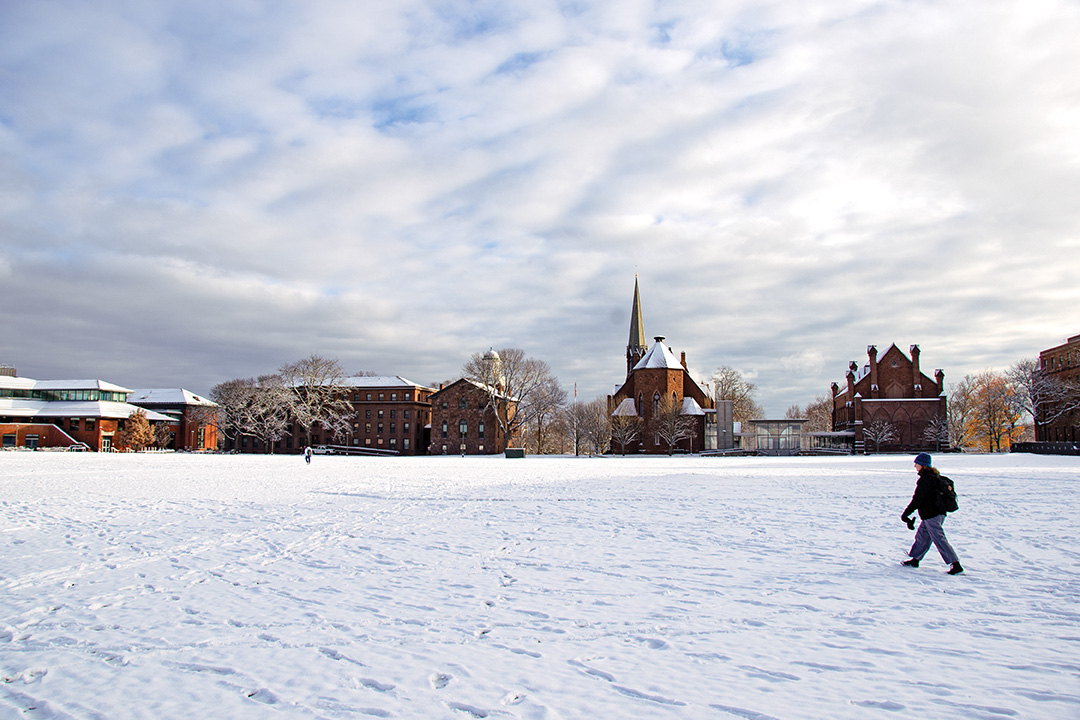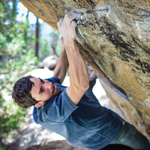Historical Row: Colin Campbell: In His Own Words

“After 15 years as a university president, I have finally learned what is expected of you. You should have the wisdom of an owl, the courage of a lion, the strength of an ox and the stubbornness of a mule, the cheery industry of an ant and the plodding endurance of a camel, meanwhile hiding the guile of a fox behind the charm of a kitten. All this, of course, without behaving like a jackass.”
—Colin Campbell, 1986 Wesleyan Alumnus magazine
2020 marks the 50th anniversary of the beginning of Colin G. Campbell’s presidency. At just 35 years old, Campbell was installed as Wesleyan’s youngest president on October 20, 1970, with the intention of staying for just six years. He would end up serving for 18, leading Wesleyan through major changes and growth and helping it become the university it is today. To celebrate this anniversary, we went into the archives and found some interviews that allow Campbell to tell you his Wesleyan story in his own words.
“I’d been at Wesleyan for three years before I became president. In a senior administrative role and spending a lot of time with faculty and with students. I certainly had plenty of exposure to the issues of the University. I had a good background. But I hadn’t had the actual experience of being in charge, and being in charge of the University is different from being in charge of any other kind of institution, because you have constituents that have a major role in the governance of the place. And working through the role of those constituents and figuring out how I wanted to spend my time took some time. But it was worth it.” (Wesleying blog, 2013)
The late 1960s was a time of major changes at Wesleyan and the world at large. Campbell embraced these changes and, in his installation address, showed his interest in moving forward: “We cannot know the future—of the University or of the world. But certainty is not essential. However tentative our assumptions, we can face the future with well-founded confidence if we examine the past and the present with clear and comprehending eyes.”
During his 21 years here, Campbell was one of Wesleyan’s longest-serving leaders and saw the University through its second period of coeducation, updating of the infrastructure (including the building of the Center for the Arts), and the raising of $63 million in a capital campaign while restructuring spending from the endowment. When asked in 2013 what accomplishments he was most proud of, he responded: “When I became president, Wesleyan had a national reputation for its wealth because it made its publishing money—it published a biweekly reader and American educational publications. The University had expanded dramatically in every way in the ’60s—the buildings on the campus, increasing the size of the faculty and administration—and we were substantially overextended. It was my job to get us back on track. And we did a very substantial review with the community. We had a series of what we called the ‘Rainbow Papers,’ which was an Argus book, in fact. It was a status report on where we were at Wesleyan and why we had to make changes….
“I think, secondly, I had been very committed to Wesleyan’s plan to admit substantial numbers of minority students. When I first came there, the Vanguard class—the class of ’69—was on campus, and it was a class that was 15% Black, compared to five years before when it was probably 1% Black. So there was already a feature of change on the campus. It was a very challenging time. But through all that time, we worked hard—students and faculty together—to make it work. And I think it did work extraordinarily well. Not without challenges all along the way, but the fact is that Wesleyan was a leader in this area started in the mid-1960s and continued in that role for the whole time that I was there.”
Campbell and his wife, Nancy Nash Campbell (who later became chair of the National Trust for Historic Preservation) were an integral part of campus life. It was with great difficulty that they decided to leave in 1988, with Campbell becoming president of the Rockefeller Brothers Fund, and now the chairman emeritus for the Colonial Williamsburg Foundation. During his announcement on October 28, 1987, he said: “This has been the toughest decision I have ever had to make. For Nancy and me, Wesleyan has not been just our home and our place of work, it has been the center of our lives for more than two decades. . . . As excited as we are about what the future holds in store for us, we are saddened by the thought that the campus, the Middletown community and the colleagues we cherish will no longer be part of our daily lives.”
The Campbells have remained active with Wesleyan over the past 30 years. Our newest interview with Campbell was conducted by Suzy Taraba, director of Special Collections & Archives, in 2016 as part of the Wasch Center emeritus faculty oral history program and is now available online.
These are just a few examples of Campbell’s eloquence, and they offer a bird’s eye view of his time at and leadership of Wesleyan. Full versions of these and other interviews can be found at Wesleyan’s Special Collections & Archives. We have digitized a selection and made them available as part of our digital collections. To access them, visit https://digitalcollections.wesleyan.edu/object/wessca-vertical.
Photo: END OF AN ERA: On October 28, 1987, Colin Campbell gave his resignation announcement in the Smith Reading Room of Olin Library.


